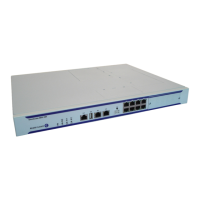LAG
Page 110 7750 SR OS Interface Configuration Guide
LSR Default Hash Routine— Label-Only Hash Option
The following is the behavior of ECMP and LAG hashing at an LSR in the existing
implementation. These are performed in two rounds.
First the ECMP hash. It consists of an initial hash based on the source port/system IP address.
Each label in the stack is then hashed separately with the result of the previous hash, up to a
maximum of five labels. The net result will be used to select which LDP FEC next-hop to send the
packet to using a modulo operation of the net result with the number of next-hops. If there is a
single next-hop for the LDP FEC, or if the packet is received on an RSVP LSP ILM, then a single
next-hop exists.
This same net result will feed to a second round of hashing if there is LAG on the egress port
where the selected LDP or RSVP LSP has its NHLFE programmed.
LSR Label-IP Hash Option Enabled
In the first hash round for ECMP, the algorithm will parse down the label stack and once it hits the
bottom it checks the next nibble. If the nibble value is 4 then it will assume it is an IPv4 packet. If
the nibble value is 6 then it will assume it is an IPv6 packet. In both cases, the result of the label
hash is fed into another hash along with source and destination address fields in the IP packet’s
header. Otherwise, it will just use the label stack hash already calculated for the ECMP path
selection.
If there are more than five labels in the stack, then the algorithm will also use the result of the label
hash for the ECMP path selection.
The second round of hashing for LAG re-uses the net result of the first round of hashing. This
means IPv6 packets will continue to be hashed on label stack only.
LSR IP-Only Hash Option Enabled
This option behaves like the label-IP hash option except that when the algorithm reached the
bottom of the label stack in the ECMP round and finds an IP packet, it throws the outcome of the
label hash and only uses the source and destination address fields in the IP packet’s header.

